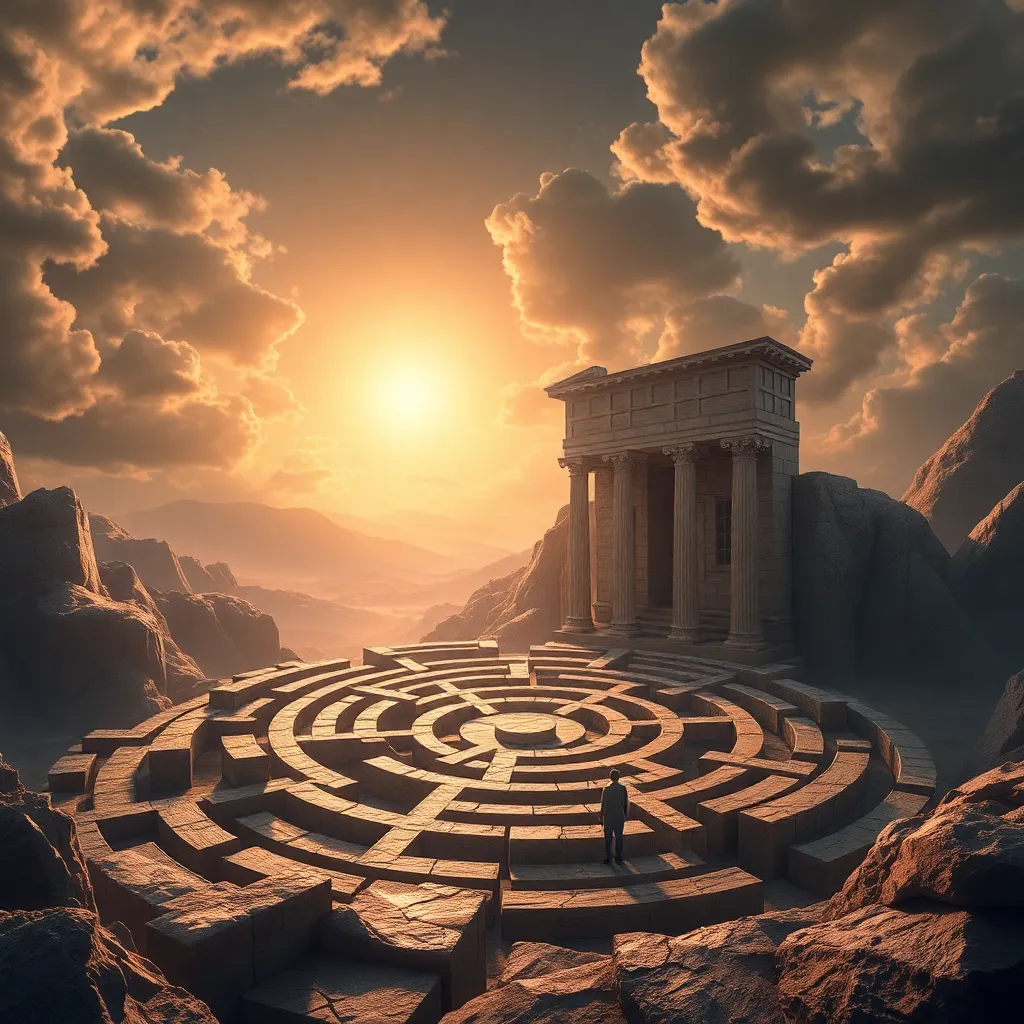The Significance of the Labyrinth in the Myth of Theseus
I. Introduction
The myth of Theseus is one of the most celebrated tales in Greek mythology, depicting the adventures and heroic deeds of a young prince from Athens. Among the various episodes of his life, the encounter with the Labyrinth is particularly significant, not only for its thrilling narrative but also for its deeper symbolic meaning.
The Labyrinth, an intricate maze designed to ensnare and confuse, serves as both a physical structure and a metaphor for life’s complexities. This article aims to explore the significance of the Labyrinth in the myth of Theseus, examining its historical context, metaphorical implications, and enduring relevance.
II. Historical Context of the Labyrinth
The origins of the Labyrinth can be traced back to the Minoan civilization on the island of Crete, where it was closely associated with the myth of the Minotaur, a creature that was half-man and half-bull. According to legend, King Minos commissioned the construction of the Labyrinth to imprison the Minotaur, a symbol of chaos and uncontrolled power.
The architectural features of the Labyrinth were designed to be confusing and disorienting, filled with twists and turns that would challenge any who entered. These features included:
- Multiple pathways
- Dead ends
- Unexpected turns
In ancient cultures, labyrinths were often seen as symbols of the journey into the unknown, reflecting the complexity of existence and the challenges one must overcome. They represented the duality of life: the danger of losing oneself and the possibility of finding a path forward.
III. The Labyrinth as a Metaphor for Life’s Challenges
The journey through the Labyrinth can be interpreted as a powerful metaphor for personal struggles and the challenges that individuals face throughout their lives. Just as Theseus navigated the maze, so too do we navigate the uncertainties and obstacles in our own lives.
Furthermore, the role of decision-making is crucial in this context. Every turn in the Labyrinth represents a choice, and the ability to make wise decisions can lead to success, while poor choices may result in entrapment or failure.
Psychological interpretations of the Labyrinth suggest that it embodies the mind’s complexities, illustrating how individuals grapple with their thoughts, emotions, and fears. The act of finding a way out can symbolize personal growth and self-discovery.
IV. Theseus: The Hero’s Journey
Theseus is a quintessential hero in Greek mythology, embodying the traits of bravery, intelligence, and determination. His motivations for entering the Labyrinth were twofold: to confront the Minotaur and to save the Athenian youth who were sent as tributes to Crete.
Throughout the myth, Theseus undergoes significant character development. Initially, he is a young and somewhat naive hero, but as he faces the challenges of the Labyrinth, he evolves into a figure of strength and wisdom. His journey is emblematic of the hero’s journey, showcasing the transformation that occurs when one confronts their fears and challenges.
V. The Role of Ariadne and the Thread
Ariadne, the daughter of King Minos, plays a pivotal role in the myth of Theseus. Her love for Theseus prompts her to provide him with a ball of thread, which he uses to navigate the Labyrinth and find his way back after defeating the Minotaur.
The symbolism of the thread is profound; it represents guidance, support, and the importance of having assistance in overcoming obstacles. This aspect of the myth highlights the significance of collaboration and connection in the face of adversity.
VI. The Labyrinth as a Site of Transformation
The experience of navigating the Labyrinth transforms Theseus from a young prince into a formidable hero. This transformation is marked by themes of courage, resilience, and ingenuity. He not only faces the physical threat of the Minotaur but also confronts his own fears and insecurities.
The Labyrinth serves as a rite of passage, a trial that shapes Theseus’s identity and prepares him for future challenges. It underscores the idea that through struggle and adversity, individuals can emerge stronger and more self-aware.
VII. Modern Interpretations and Relevance
The concept of the Labyrinth continues to resonate in contemporary literature and art. It often appears as a motif representing the complexities of human experience, the search for meaning, and the journey toward self-discovery.
Lessons from the myth of Theseus can be applied to modern life, reminding us that:
- Challenges are an inherent part of the human experience.
- Decision-making is crucial in navigating life’s uncertainties.
- Support from others can be vital in overcoming obstacles.
The enduring legacy of the Labyrinth is evident in psychology, where it symbolizes the inner workings of the mind and the quest for clarity amidst confusion. It invites individuals to reflect on their own ‘Labyrinths’ and the paths they take in life.
VIII. Conclusion
In conclusion, the Labyrinth holds significant meaning within the myth of Theseus, serving as a powerful metaphor for life’s challenges and personal transformation. Through the lens of this ancient tale, we can reflect on our own journeys and the obstacles we face.
The myth of Theseus remains relevant to the human experience, encouraging us to confront our fears, seek guidance, and embrace the transformative power of challenges. As we navigate our own Labyrinths in today’s world, let us remember the lessons of courage, resilience, and collaboration that this timeless myth teaches us.




